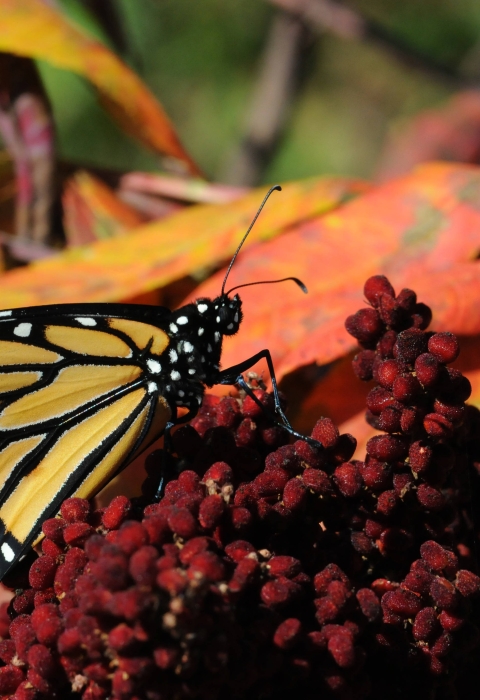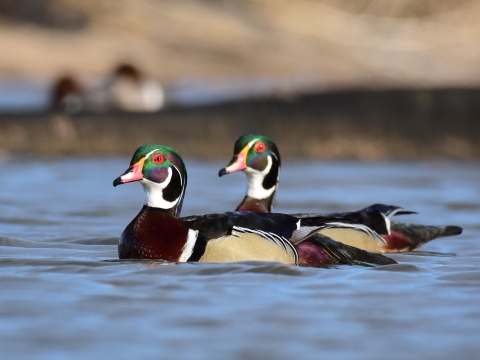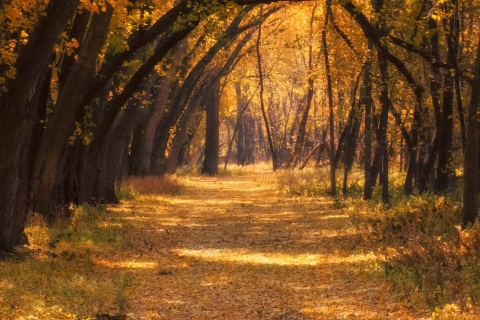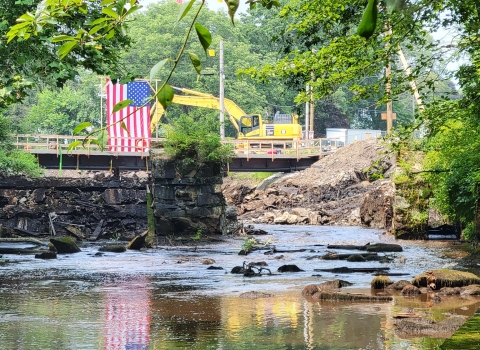It's that time of year again, where summer is winding down and leaves begin to turn, as schools start to pick back up.
At Minnesota Valley National Wildlife Refuge, blossoming bunches of goldenrods and asters begin to paint our fields with deep luscious yellows and purples, a sign that fall is near. Prairies are lively with big bluestem and Indian grasses shedding pollen and blowing in the wind, while our trails are flowering with bright yellow compassplants, blazing star, white snakeroot, hoary vervain and milkweed.
Vegetation is especially active this time of year with bumble bees buzzing around and crawling up their stem. Aggregations of monarch butterflies can be viewed clustering on trees, a sign that their migration is beginning.
In September, the first common milkweed pods are open and shed brown seeds on silver-white parachutes, using the wind to help spread their seeds, increasing future year’s milkweed patches. Milkweed is essential for the butterfly’s life cycle, as monarch caterpillars feed exclusively on their leaves, which is why the adult butterflies will only lay their eggs on milkweed plants.
Feathered Friends
Waterfowl migration marks the beginnings of September, where blue-winged teal set the pace as the earliest migrating duck species. Passing through the waters and tending to their feathers are wood ducks, mallards, trumpeter swans, herons, sandhill cranes, northern pintails, northern shovelers, American white pelicans and large congregations of great egrets.
Seen frolicking in the trees are tree and barn swallows, bald eagles, downy woodpeckers and red-winged black birds.
Nature’s Songs
It’s a beautiful time of year, where the refuge awakens with the melodies of several songbirds. The eastern wood-pewee's plaintive song of three sliding notes (pee-a-weeee) is distinctive and easy to learn. The great-crested flycatcher can also be heard singing a three-part dawn song that consists of two short, sweeping whistles and a low burry vibrato. Other common songs may be heard from the American robin, belted kingfisher, black-capped chickadee, northern cardinal, yellow warbler and the American goldfinch.
Also humming a tune are chorus, green and leopard frogs, American toads, grasshoppers and cicadas, bringing a liveliness and buzzing to the refuge. Other wildlife observations in September include beavers, muskrats, thirteen-lined ground squirrels and river otters.
Come Explore!
As you wander through the trails, you may catch a glimpse of slight touches of red on sugar maples, sumacs and the vines of Virginia creeper, as well as yellows on eastern cottonwood and native basswoods. Hundreds of sunflowers can also be seen blooming in fields, along trails and even on the edges of roadways. Collections of mushrooms can also be found, while apples are in peak harvest as they rest from their stem.
It’s a beautiful and inspiring time of year, where we are pleased to see hikers, birders and bikers strolling the trails. Stop by and enjoy a peaceful adventure at Minnesota Valley National Wildlife Refuge!





